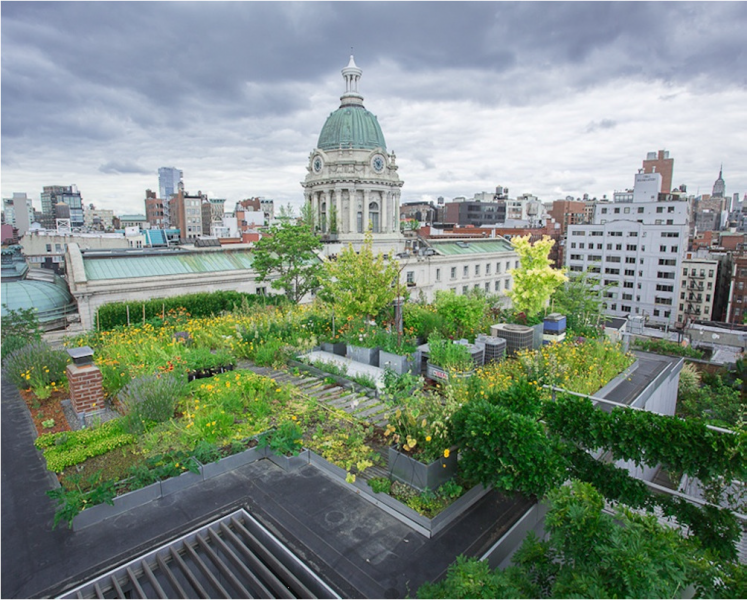| Attachment | Size |
|---|---|
| u1_-_green_roofs.pdf | 1.03 MB |
Green roofs are multi-layered systems that cover the roof of a building with vegetation and/or green landscaping over a drainage layer. There are two types of green roof:
- Extensive green roofs cover the entire roof area with lightweight, low growing, self-sustaining, low maintenance planting. They are only accessed for maintenance. Vegetation normally consists of hardy, drought tolerant, succulents, herbs or grasses. Extensive green roofs are often known as sedum roofs, eco-roofs or living roofs.
- Intensive green roofs are landscaped environments with high amenity benefits including accessible planters or trees and water features. These impose a greater load on the roof structure and require significant ongoing maintenance including irrigation, feeding and cutting. Intensive roofs are also termed roof gardens.
A typical structure for a green roof includes a surface vegetation layer underlain by a substrate (growth medium), geotextile filter layer, and an aggregate or geo-composite drainage layer. The green roof materials are underlain by a waterproof membrane, with an additional layer of insulation between that and the roof itself. Green roofs are designed to intercept rainfall, which is slowed as it flows through the vegetation and a drainage layer, mimicking the predevelopment state of the building footprint.
Some of the rainwater is stored in the drainage layer and taken up by the vegetation, with the remainder discharged from the roof in the normal way (via gutters and downpipes). Flow rates from the green roof are reduced and attenuated compared to a normal roof, and the total volumes discharged from the roof are also reduced. Green roofs therefore intercept rainfall at source and provide the first component of a SuDS management train.

Green roof
Source: Andras Kis’ presentation, NWRM Workshop 1
| Benefits | Level | |
|---|---|---|
|
ES3 - Natural biomass production
|
Low
|
|
|
ES4 - Biodiversity preservation
|
Low
|
|
|
ES5 - Climate change adaptation and mitigation
|
Medium
|
|
|
ES7 - Flood risk reduction
|
Medium
|
|
|
ES9 - Filtration of pollutants
|
Low
|
|
|
ES10 - Recreational opportunities
|
Low
|
|
|
ES11 - Aesthetic/cultural value
|
Medium
|
|
|
PO2 - Improving status of physico-chemical quality elements
|
Low
|
|
|
PO4 - Improving chemical status and priority substances
|
Low
|
|
|
PO7 - Prevent surface water status deterioration
|
Low
|
|
|
PO9 - Take adequate and co-ordinated measures to reduce flood risks
|
Medium
|
|
|
PO11 - Better protection for ecosystems and more use of Green Infrastructure
|
Medium
|
|
|
PO14 - Prevention of biodiversity loss
|
Low
|
|
|
BP1 - Store runoff
|
Medium
|
|
|
BP2 - Slow runoff
|
Medium
|
|
|
BP5 - Increase evapotranspiration
|
High
|
|
|
BP8 - Reduce pollutant sources
|
Low
|
|
|
BP9 - Intercept pollution pathways
|
Low
|
|
|
BP14 - Create terrestrial habitats
|
Low
|
|
|
BP16 - Reduce peak temperature
|
Low
|
|
|
BP17 - Absorb and/or retain CO2
|
Low
|